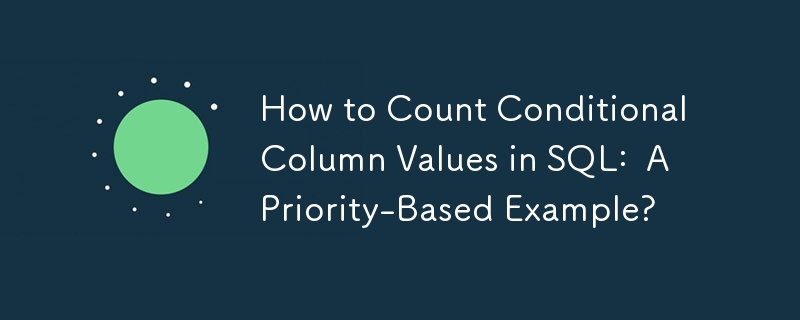Found a total of 10000 related content
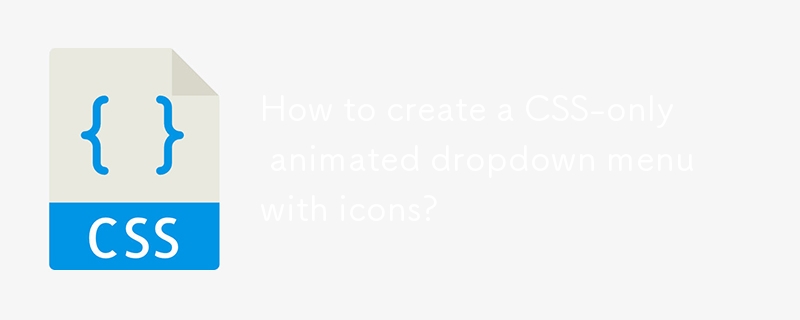
How to create a CSS-only animated dropdown menu with icons?
Article Introduction:Yes, you can create an icon-free drop-down menu with icons using CSS. 1. Use semantic HTML structure to include nested ul and FontAwesome icons; 2. Set basic styles, transition effects and hide drop-down content through CSS; 3. Use :hover and :focus-within to achieve drop-down display and icon rotation animation without JavaScript, and support keyboard navigation, ultimately implementing a beautiful and accessible pure CSS animation drop-down menu.
2025-08-01
comment 0
968
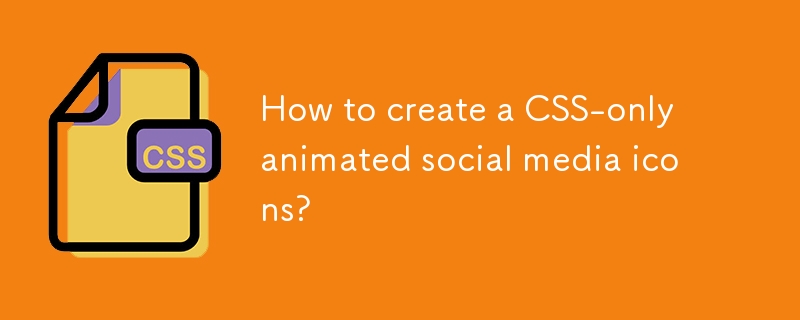
How to create a CSS-only animated social media icons?
Article Introduction:Creating animated social icons using pure CSS can be achieved through HTML structure and CSS animation; 2. Define each social platform icon with class name in HTML and introduce FontAwesome; 3. Use Flexbox to layout and set a unified icon style, including size, rounded corners, shadows and transition effects; 4. Specify brand colors for each platform, and Instagram uses linear gradient background; 5. Add scaling, displacement, rotation and shadows to enhance interaction through:hover pseudo-class; 6. Optionally add luminous or rippling animations to improve visual effects; 7. Ensure accessibility and add aria-label, ensure responsiveness and high performance, and ultimately achieve smooth animation icons without JavaScript.
2025-08-02
comment 0
521

How to add a preloader or loading screen to an HTML website?
Article Introduction:To add loading animation to a web page, first create an animation structure and set the style with HTML and CSS, and then hide the animation after the page loading is completed through JavaScript. The specific steps are as follows: 1. Create an HTML structure for loading animations, such as a div containing a rotating icon; 2. Use CSS to set animation styles, including centered display, background color and animation effects; 3. Listen to the window.onload event through JavaScript, and hide the animation after the page resource is loaded; 4. You can combine the DOMContentLoaded event or imagesLoaded library to achieve more accurate load control; 5. Pay attention to avoiding animations hindering user interaction, adapt to mobile terminals and optimize page loading
2025-07-13
comment 0
163

css animation examples
Article Introduction:Hover button zooms in to achieve interactive effects through transform:scale() and transition; 2. Fade in animation using @keyframesfadeIn with animation:forwards to maintain the final state; 3. Infinite rotation icon uses transform:rotate() and border differences to create loading effects; 4. Left and left jitter prompts to move between 25% and 75% keyframes through translateX to generate warning feedback; 5. Slide up and down banners from negative values to 0 to slide into vision; 6. Text typewriter effect simulates verbatim input through width gradient with steps() and adds cursor flash
2025-07-28
comment 0
305

What is requestAnimationFrame
Article Introduction:requestAnimationFrame (rAF) is more suitable for animation than setTimeout or setInterval because it is synchronized with the browser refresh mechanism to achieve smoother and more efficient animation effects. ① rAF will call the specified function before the next repaint of the browser, usually execute at a frequency of 60 frames per second to make the animation smoother; ② When the tab page is not in the foreground, it will automatically pause and save resources; ③ When using it, start the animation loop by recursively calling requestAnimationFrame and stop avoiding memory leaks under appropriate conditions; ④ Pay attention to avoid frequent operation of DOM, it is recommended to use high-performance properties such as transform and use the timestamps received by the callback function for precise control; ⑤
2025-07-03
comment 0
206

Creating a Dynamic Navbar in Bootstrap: A Step-by-Step Tutorial
Article Introduction:To create a dynamic navigation bar in Bootstrap, follow these steps: 1. Include Bootstrap files, hosted via CDN or locally. 2. Create a basic navigation bar structure and use Bootstrap's navbar component. 3. Use JavaScript to achieve dynamic effects, such as displaying or hiding the navigation bar according to the scroll position. 4. Adjust the responsiveness and use different breakpoint classes such as navbar-expand-lg. 5. Customize the appearance and animation effects of the navigation bar through CSS. 6. Ensure the performance and accessibility of the navigation bar, test different devices and add ARIA tags. Through these steps, you can create a dynamic navigation bar that is both beautiful and enhances the user experience.
2025-07-16
comment 0
209

How to customize the Dock on a Mac?
Article Introduction:To adjust the Dock on Mac according to usage habits to improve efficiency, you can follow the following steps: 1. Adjust the size and position: Go to "System Settings" > "Desktop and Dock", check "Automatic Show and Hide Dock", slide the bar to adjust the icon size; select the left, bottom or right place in "Dock Position". 2. Add or remove apps and folders: Drag the app from "Applications" to the Dock, and drag out the outside of the icon to remove the item. 3. Customize behavior and animation effects: Set click icon to display recent documents, window thumbnail previews, and use dividers or empty launchers to improve organization and quickly return to the desktop. Turning on the auto-hide function helps save screen space and make your work more focused.
2025-07-12
comment 0
414
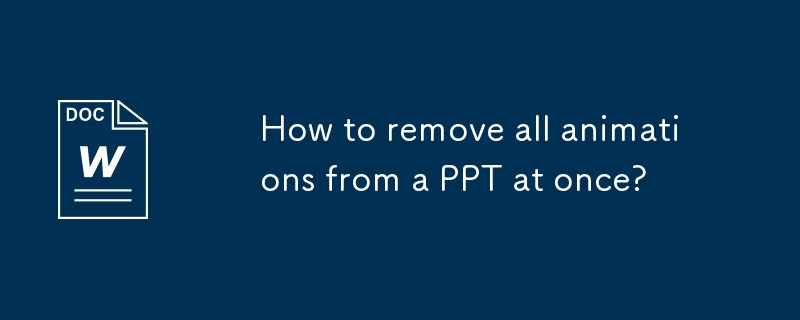
How to remove all animations from a PPT at once?
Article Introduction:To remove all animations in PowerPoint at once, you need to use VBA macros; 1. Press Alt F11 to open the VBA editor; 2. Insert a new module and paste the provided RemoveAllAnimations code; 3. Press F5 to run the macros to clear all animation effects; in addition, you need to manually go to the "Switch" tab and click "All Apps" and select "None" to completely remove the slide switching effect. This method can efficiently process long presentations, be sure to save the file before operation.
2025-08-03
comment 0
626
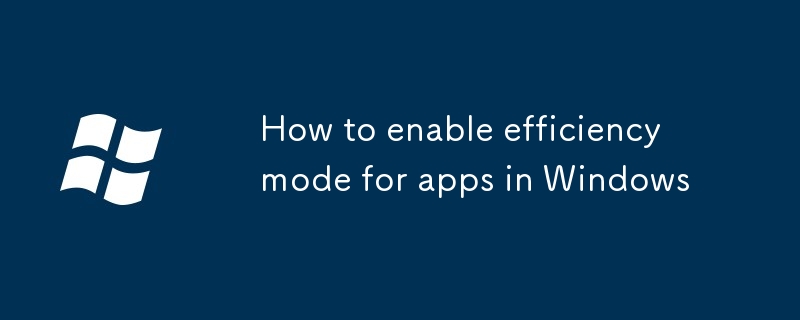
How to enable efficiency mode for apps in Windows
Article Introduction:Windows does not have a direct “efficiency mode” switch, but similar effects can be achieved through a variety of built-in functions. 1. Use Task Manager: Press Ctrl Shift Esc to open, right-click the target application and select "Go to Details", then right-click the process to select "Set Priority" to "Lower than Normal" or "Low" to reduce CPU usage, and disable unnecessary power-on and self-start programs in the "Startup" tab. 2. Enable battery saver or power efficiency mode: Click the battery icon in the taskbar to turn on the battery saver, or automatically enable it through the "Settings > System > Power and Battery" setting, which can limit background activity, slow application synchronization and reduce visual effects. 3. Manage background application permissions: Go to "Settings>
2025-08-03
comment 0
608

What is the CSS :target pseudo-class used for?
Article Introduction:CSS's :target pseudo-class is used to match and style target elements in the page based on the URL's fragment identifier (last part). 1. It is often used to highlight the page area that users jump to through anchor links, such as highlighting the target section through background color or border; 2. It can be used for simple tab pages or accordion effects without JavaScript, and control the display and hiding of the target elements through display attributes; 3. It can combine transition to achieve smooth animation effects when target switching; 4. It only takes effect when the URL fragment matches the element id, and does not affect the browser's default scrolling behavior, and is not supported but elegantly downgraded in old browsers such as IE8 and below.
2025-07-19
comment 0
266
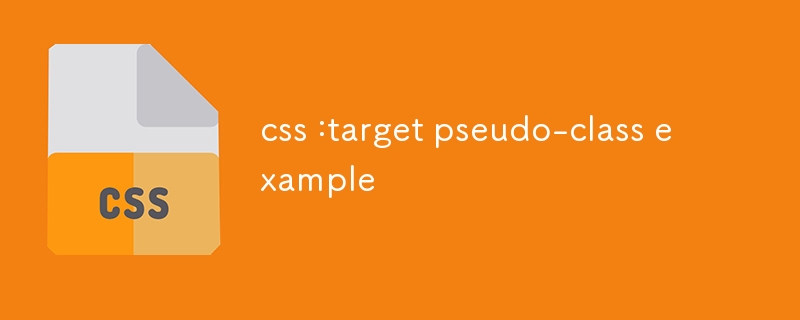
css :target pseudo-class example
Article Introduction::target pseudo-class is used to style elements pointed to by URL fragment identifiers. 1. When the link points to the ID in the page, the corresponding element becomes the target and applies a special style; 2. It can be used to highlight content, create tabs, or display/hide elements; 3. In the example, the target block is displayed and others are hidden through section:target; 4. The actual application includes FAQ, tab page and content highlighting; 5. Support animation enhancement effects without JavaScript; 6. Pay attention to ID uniqueness and only one element at a time is the target; 7. All modern browsers support this feature.
2025-07-28
comment 0
408

How to make a bottom navbar in Bootstrap?
Article Introduction:The key to making the bottom navigation bar at Bootstrap is to have a clear structure and correct style. First, use the nav elements to build the basic structure with the .nav and .nav-pills classes, and fix the navigation at the bottom through fixed-bottom; second, arrange the ul and li elements in HTML and combine the active class to select highlights; then, use mx-auto to center the content, and optimize the visual effects to the mobile terminal adaptation through the FontAwesome icon and responsive class; finally, pay attention to avoid using navbar-nav and deal with content occlusion and compatibility issues caused by fixed positioning, and realize a practical and beautiful bottom navigation bar.
2025-07-24
comment 0
153

Bootstrap navbar accessibility best practices
Article Introduction:To improve the accessibility of the Bootstrap navigation bar, you need to pay attention to the following three points: 1. Use semantic labels and ARIA attributes to clarify the navigation structure and interaction status, such as wrapping the navigation bar and adding aria-label, and setting properties such as role and aria-expanded for the drop-down menu; 2. Ensure smooth navigation of the keyboard, all links and buttons can be focused through the Tab key, and support Enter or Space key operations; 3. Provide sufficient color contrast and icon text description, and use aria-label or .visually-hidden class to assist screen readers to identify content, thereby comprehensively improving the user experience of all users.
2025-07-24
comment 0
995

Where is the Windows key on a keyboard
Article Introduction:The Windows keys are usually located between the Ctrl and Alt keys on the bottom row of the keyboard, close to both sides of the space bar. It is marked with the Windows logo (an icon similar to a four-grid window frame), which is commonly found on a standard PC keyboard, with one on each side of the left and right; the laptop keyboard usually has one on the left and may be slightly smaller; the Mac keyboard is replaced by the Command key in BootCamp mode; its functions can be achieved through software remapping of non-Windows keyboards. Press the Windows key to open the Start menu, such as Windows D display desktop, Windows E launches file explorer, Windows L locks the computer, Windows Tab opens the task view, providing a variety of improved operational effects
2025-07-11
comment 0
931
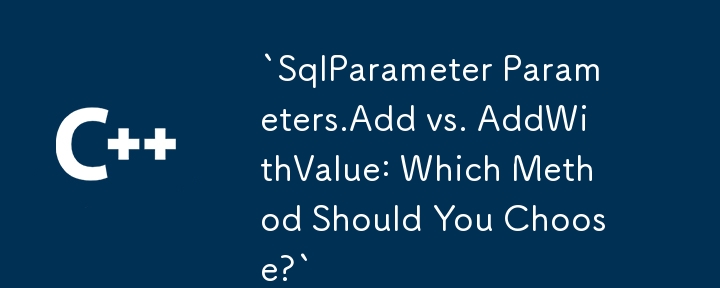

Dave The Diver: How To Catch Spider Crabs
Article Introduction:In Dave The Diver, there are some creatures that are not easy to catch. Or, catch alive that is. The spider crab is one of those very species, making it seem like the only way to bring these crustaceans back up to land is to viciously crack them up w
2025-01-10
comment 0
864
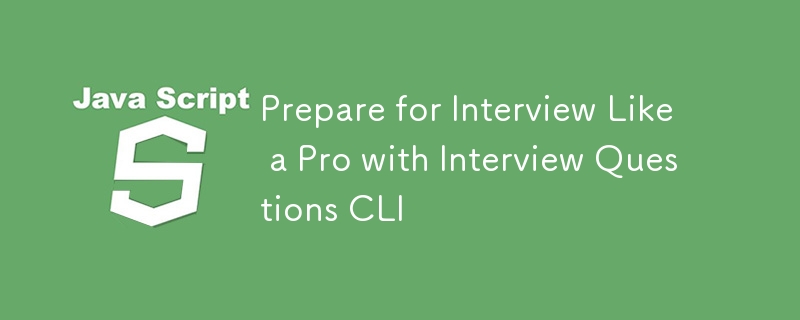
Prepare for Interview Like a Pro with Interview Questions CLI
Article Introduction:Prepare for Interview Like a Pro with Interview Questions CLI
What is the Interview Questions CLI?
The Interview Questions CLI is a command-line tool designed for JavaScript learners and developers who want to enhance their interview
2025-01-10
comment 0
1490
















